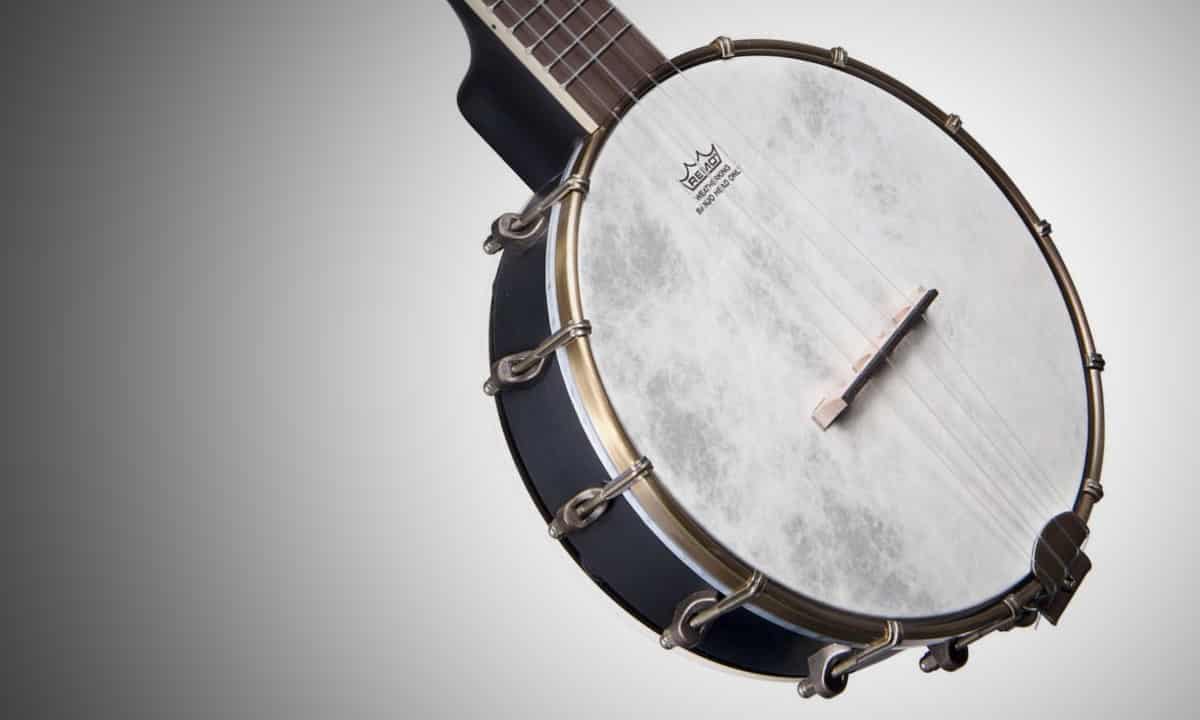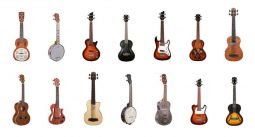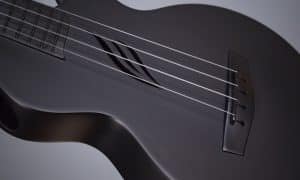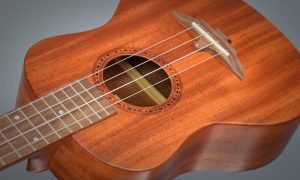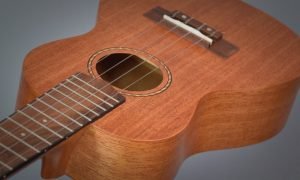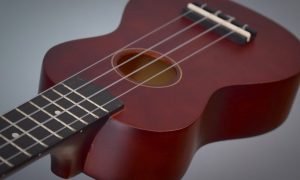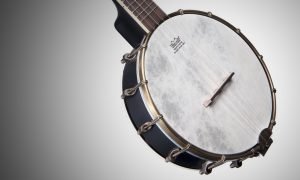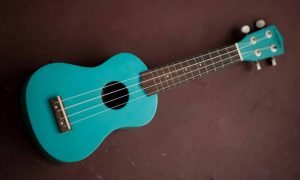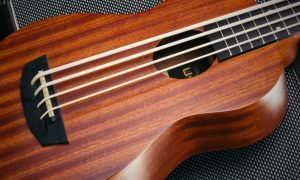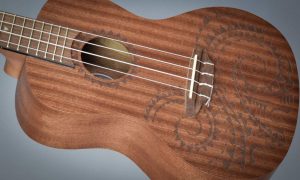The banjolele is a unique ukulele-sized instrument with the body of a banjo. Banjo ukes have been around since the early 1900s, and they remain popular today in certain styles of music.
This article on banjoleles is divided into three sections:
- Banjolele reviews & the best banjoleles
- Banjolele buying guide
- Banjolele setup
Banjolele Reviews
This is a quick overview of the banjoleles reviewed in this article. I go into more detail on each instrument below.
|
|
Kmise Banjolele (Concert Size) | 554 Reviews | $74.99 | Check Current Price |
|
|
Aklot Banjolele (Concert Size) | 440 Reviews | $99.99 | Check Current Price |
|
|
Oscar Schmidt OUB1 Banjo Ukulele | 113 Reviews | $269.99 | Check Current Price |
|
|
Kala KA-BJN-BKC Concert Banjo Ukulele | 46 Reviews | $359.00 | Check Current Price |
|
|
Deering Goodtime Banjo Ukulele | 30 Reviews | $489.00 | Check Current Price |
1. Kmise Banjolele (Concert Size)
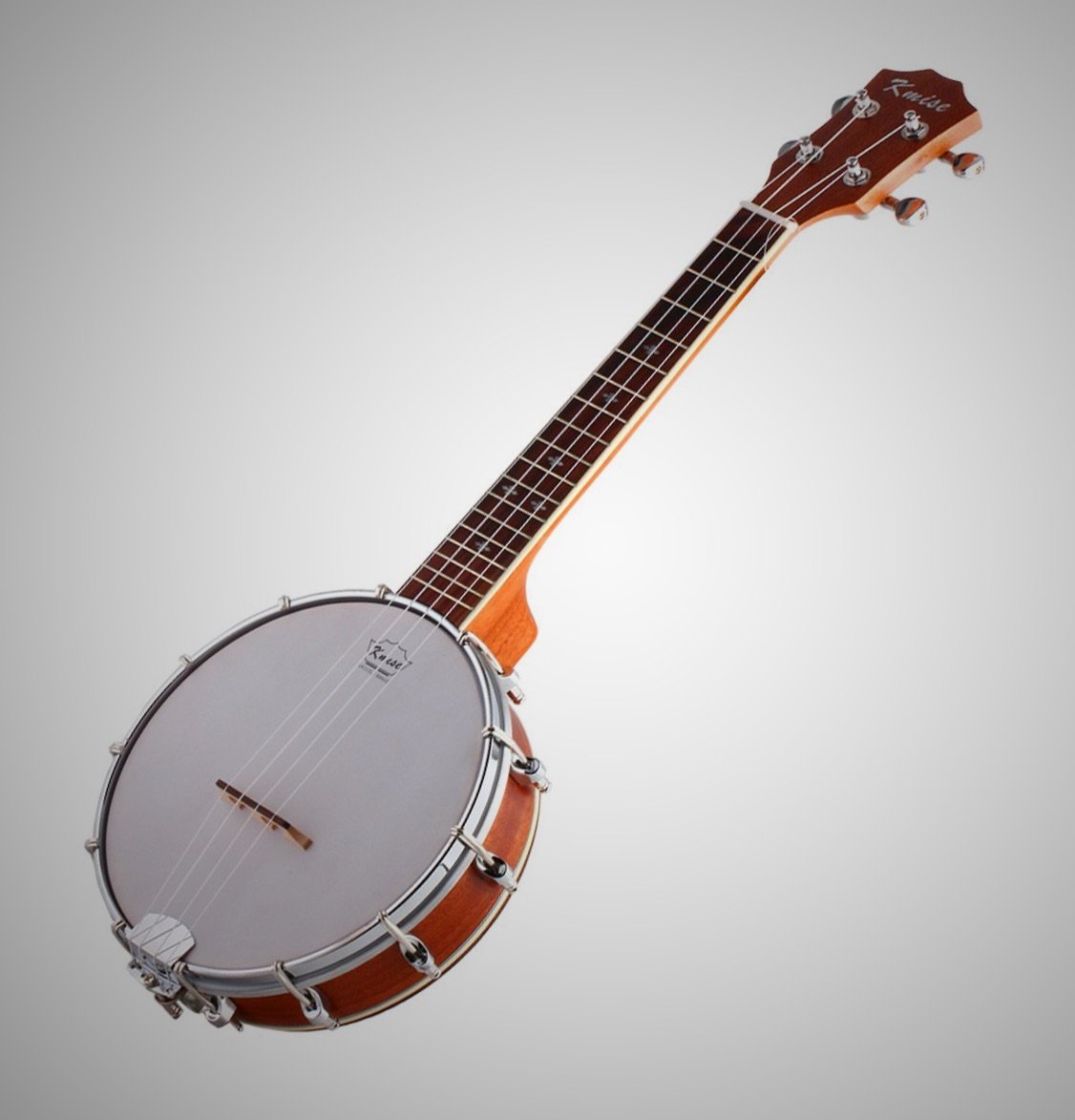
| 554 Reviews | $74.99 | Check Current Price |
The Kmise banjolele is currently one of the top-selling, best-rated banjo ukes on Amazon.
This model has a 15″ scale, which makes it comparable to a concert ukulele size. It’s available in a handful of different inlay patterns, such as dots, diamonds, flowers, and blocks.
Build Quality
I own a traditional Kmise ukulele (review coming soon) and I’ve been really impressed with its quality and tone. I would imagine the Kmise banjolele is of similar quality, and based on customer reviews, this seems to be the case.
Removable Back Plate
One interesting feature is the removable back plate. According to Kmise (and at least one reviewer), removing the back plate results in a brighter, more punchy tone. Leaving the plate on results in a softer, more mellow voice.
Accessories & Gig Bag
This model comes with a padded gig bag and clip-on tuner, making it one of the best values of all the banjoleles reviewed in this article. If you’re on a budget or just want a banjolele to fool around with as a second instrument, the Kmise banjolele is a safe bet.
However, I’d highly recommend checking out the Aklot model mentioned below. It’s a little more money, but
2. Aklot Banjolele Pack
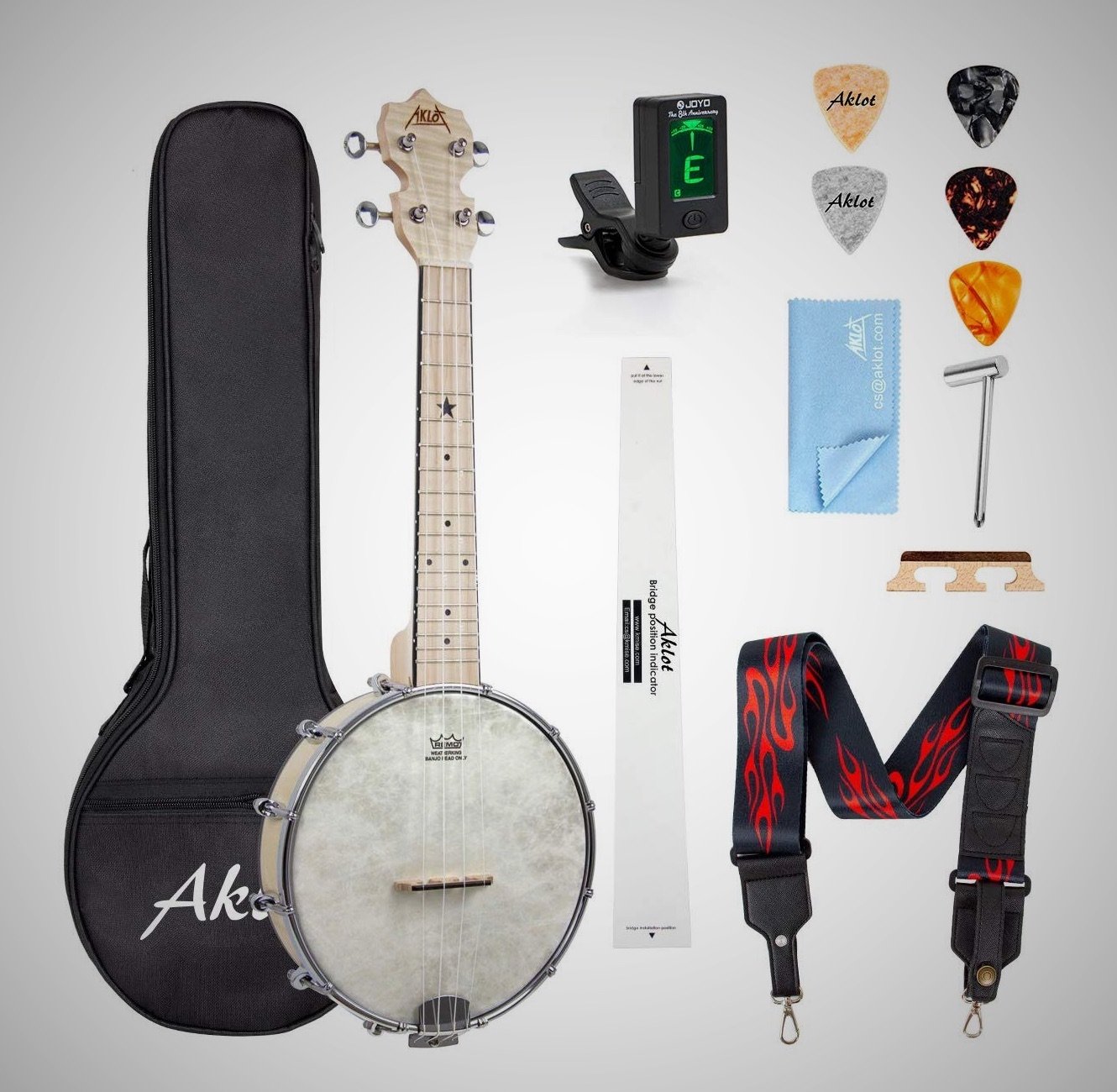
| 440 Reviews | $99.99 | Check Current Price |
I’m in the process of doing a hands-on review of the Aklot ukulele right now, and my initial impressions are very good.
The craftsmanship is excellent, and it has the best fit and finish I’ve seen on a banjolele in this price range.
Features
A few features that I like about the Aklot banjolele:
- The maple neck and rim have a natural satin finish that looks great and feels nice when playing
- Remo Fiberskyn has a neat vintage look and produces a warmer, mellower tone than other heads
- Open-gear tuners are smooth and responsive
- Plastic template makes it easy to set the bridge in the correct location. This is more important than you might think!
- Included clip-on tuner is pretty good
Setup
While it’s not exactly a feature, I also liked that my Aklot banjolele played perfect right out of the box.
All I had to do was use the included plastic template to set the bridge in the correct position and I was ready to go.
The head tension and neck angle both seemed about right, so I didn’t have to fiddle with either.
Customer Reviews
This is a fairly new product, so it hasn’t accumulated a base of customer reviews like other banjoleles for sale online.
I wouldn’t let this scare you away–this is a really nice instrument and probably one of the best banjolele deals on the market right now.
3. Oscar Schmidt OUB1 Banjo Ukulele
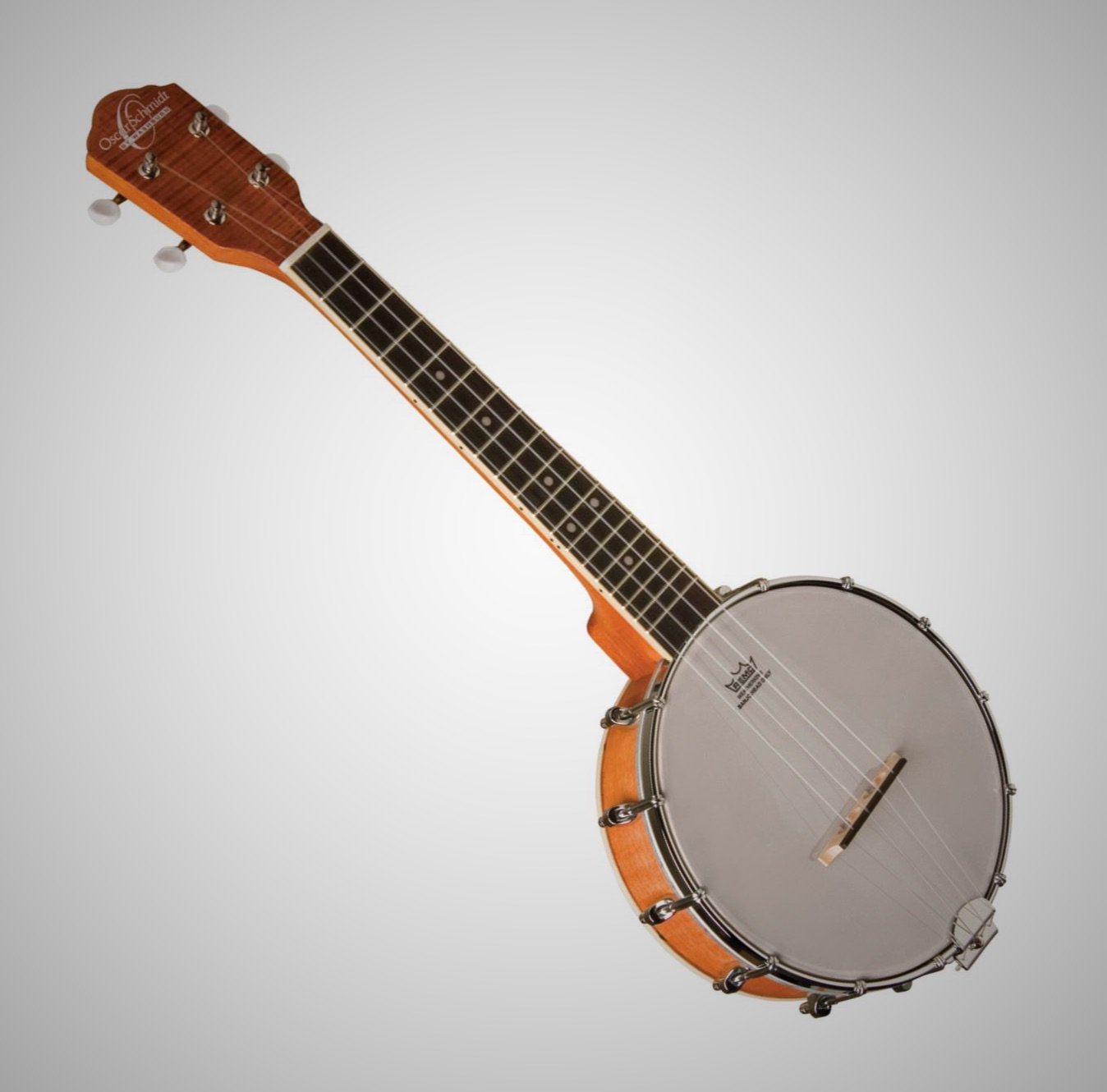
| 113 Reviews | $269.99 | Check Current Price |
In some of my other ukulele reviews, I’ve mentioned that that I’m not very enthusiastic about Oscar Schmidt products. That feeling is also true of their OBU1 banjolele.
As the manager of a small acoustic music store, I’ve had the opportunity to play a couple of these banjo ukes over the years. They were decent, but not great. The build quality and fit and finish were OK, but I never felt they were worth the money.
To be fair, it’s been a long time since I’ve played one of these, and it’s entirely possibly Oscar Schmidt has stepped up their game since then. Customer reviews indicate that most people are happy with their OBU1, but I did see a number of complaints that the instrument needed a fair amount of setup work before it was playable.
Considering the somewhat high price of the OBU1, I’d steer people towards the Aklot or Kmise models mentioned above. Those instruments offer better quality at a lower price, plus they include a gig bag and clip-on tuner.
4. Kala KA-BJN-BKC Concert Banjo Ukulele
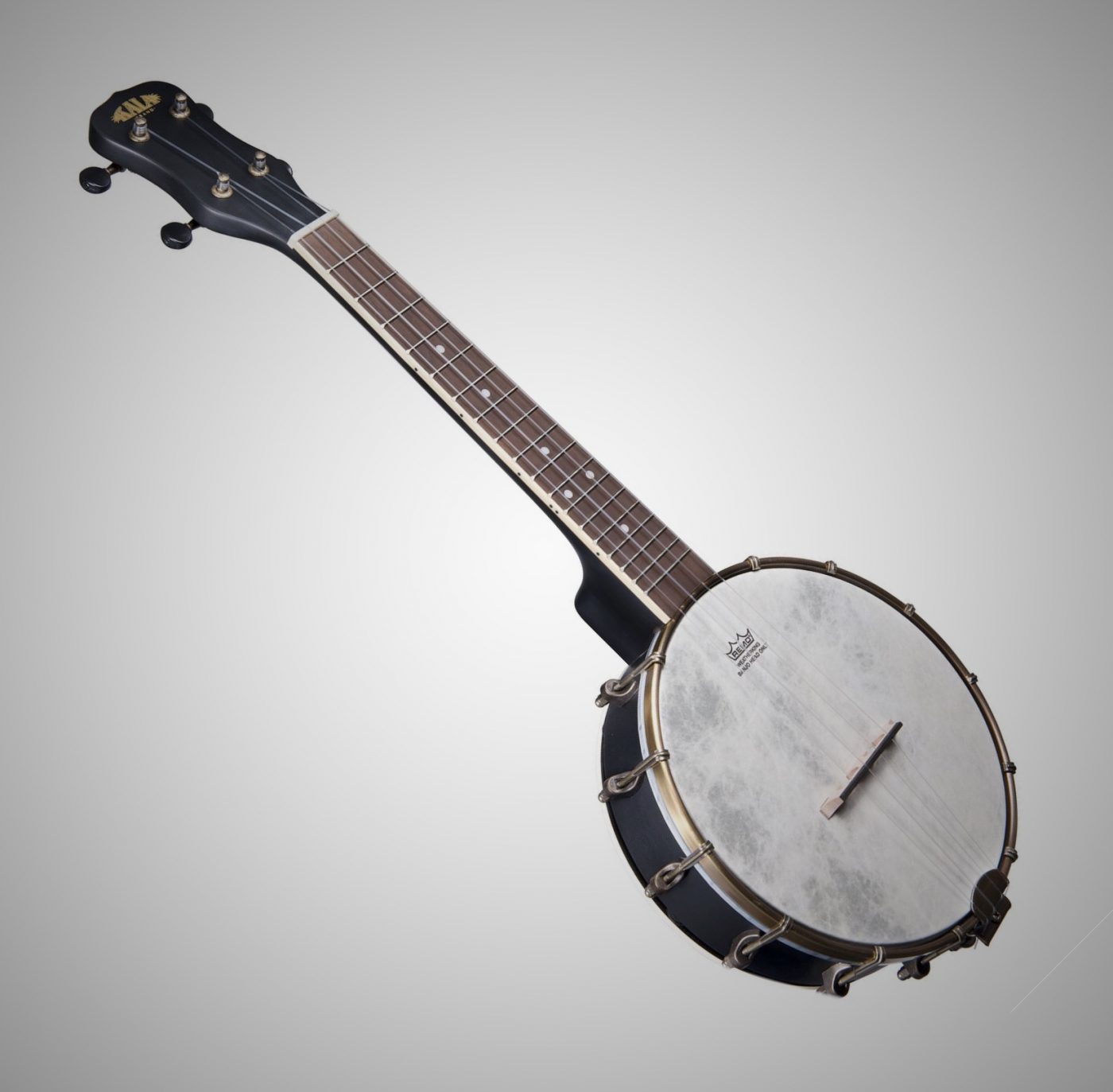
| 46 Reviews | $359.00 | Check Current Price |
When it comes to beginner ukuleles, Kala is one of the oldest brands around. They’ve made a name for themselves by offering good quality at an affordable price.
Build Quality, Playability & Tone
I’m generally a big fan of Kala ukes, and their KA-BJN-C is no exception. We used to sell this model at my music store, and I can confirm that they were beautifully built, played well, and sounded great.
Price
Despite the great quality, I have a hard time recommending it due to the shockingly high price. In my opinion, the Aklot uke I reviewed above is every bit as good but costs nearly a third of the price of the Kala.
If this model were under $150, I’d recommend it in a heartbeat. At its current price, I’m afraid it’s not a very good value.
5. Deering Goodtime Banjo Ukulele (Concert Scale)
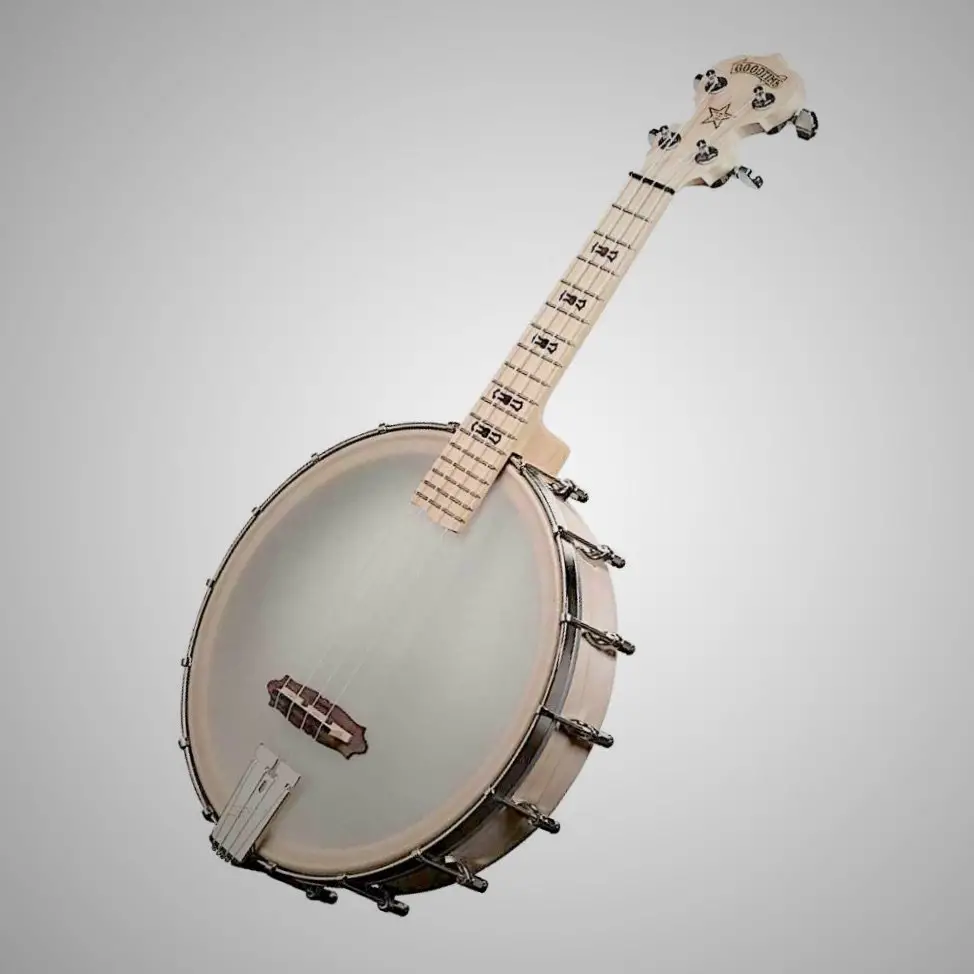
| 30 Reviews | $489.00 | Check Current Price |
Deering is one of the most well-known names in banjos. One of their claims to fame is that every Deering banjo is made in the USA, including their affordable Goodtime series.
If you’ve got the funds and don’t mind the unconventional look, the Deering Goodtime banjolele is an excellent choice.
The Goodtime banjolele has a handful of unique features that set it apart from other banjoleles, which I’ll cover in detail below.
Large 11″ Rim
The Goodtime Banjo Ukulele has a much bigger rim than a standard banjolele. This results in a tone that’s louder, warmer, and bigger than most of the other banjo ukes featured in this article.
To my ears, the Goodtime banjolele has a bit more of a banjo-like sound than the other banjo ukes featured in this article. Those smaller banjo ukes tend to have a more plunky tone with less bass and sustain.
The Deering Banjo Ukulele is also available with a 17″ tenor scale. This model has an even larger 12″ rim.
Hardware & Parts
Since it’s a Deering, the Goodtime Banjo Ukulele features high-quality parts and hardware. These include:
- Good closed-gear tuners for smooth, precise tuning
- Deering bridge and bridgeplate for increased sustain
- Deering tailpiece
Made in the USA
This is one of the only banjoleles on this list that is made in the USA.
In my experience, acoustic instruments made in the USA are higher quality and have better fit and finish than cheaper mass-produced, imported products. The tradeoff is that US-made instruments are typically much more expensive.
This isn’t to say that imported instruments are bad. Many Asian-made banjoleles are excellent, especially for the money.
6. Used Banjoleles
A quick search on eBay results in dozens of interesting used banjoleles for sale.
Many of these banjo ukes were made decades ago, giving them a cool vintage vibe that’s impossible to match with a new instrument. They also tend to be surprisingly affordable, with many selling for under $200.
Buyer Beware
Buying a vintage instrument from a stranger online isn’t without risk.
One problem is that many of these older banjoleles need a lot of work before they’re playable. Many old banjo ukes will need things like a new head, new bridge, new strings, new tuners, neck adjustment, setup, and so on. A skilled instrument repair person might charge $200 (or more) to do this amount of work.
Sometimes the seller knows enough about instruments to accurately describe any issues; other times you’re pretty much buying blind and hoping for the best.
I’m not saying you should never buy a used banjolele online, but you do need to be careful. There are some great deals out there for those willing to look. Just make sure you do your research, ask questions, and have realistic expectations.
Banjolele Buyer’s Guide
What is a Banjolele?
A banjolele is a small stringed instrument with the neck of a uke and the body of a banjo.
This body consists of a round rim with a drum-like head stretched across the top.
The rim (also known as the pot) is usually made of wood, but some banjo ukes have metal or plastic rims. The head is typically plastic, but some older banjoleles had heads made from animal skin.
Most banjoleles are based on a soprano or concert ukulele scale, although tenor scale banjo ukes do exist.
Difference Between Banjo and a Banjo Ukulele
Even though the banjolele looks like a tiny banjo, it’s much closer to a ukulele.
Banjo Characteristics
- Five metal strings
- Tuned differently from a ukulele (G-D-G-B-E)
- 26″ to 28″ scale
- Usually played with fingerpicks
Ukulele Characteristics
- Four soft nylon strings
- Tuned like a standard ukulele (G-C-E-A)
- Short 13″ or 15″ scale
- Usually played with fingers.
Banjolele Tuning
A banjolele is usually tuned like a standard ukulele: G-C-E-A.
Some people use other tunings, like A-D-F♯-B, but these are far less common.
Banjolele Strings
Banjo ukuleles use the same strings as a standard ukulele. These strings are typically made of a stretchy synthetic material like nylon, fluorocarbon, or Aquila’s popular Nylgut.
There are a lot of different types of ukulele strings, and they can have a huge impact on the tone of your uke. Some strings will produce a louder, brighter tone. Others will result in a warmer, mellower voice. If you’re looking for a particular sound, you may need to experiment with different string sets.
Size Matters With Ukulele Strings!
When buying strings for a banjolele, make sure you’re getting the right size. For example, if your banjolele has a soprano scale, you’ll need to buy soprano strings. If it has a concert scale, look for concert ukulele strings.
Are Banjolele and Ukulele Chords the Same?
Yes! Chords are exactly the same for both the banjolele and ukulele.
How Do You Play a Banjolele?
Many people play a banjolele the same way they play a ukulele: with their fingers.
For a louder, brighter tone, some players prefer to use a pick.
What is the Best Banjolele?
Like most things, the answer largely depends on your budget.
If you’re not looking to spend a lot on a banjolele, the Aklot and Kmise banjo ukes I mentioned above are worth a look.
Folks who have a little more to spend will want to check out the Deering Goodtime or the Magic Fluke Firefly.
Setting Up a Banjolele
Banjoleles have a lot of adjustable parts, which means they will often need a little bit of tweaking when they’re fresh out of the box.
The process of adjusting a banjolele to obtain the best tone and playability is known as “setting up” the instrument. When an instrument plays well and sounds right, people say it has a good setup.
While a full guide to setting up a banjolele is beyond the scope of this article, here are a few key points to keep in mind.
Banjolele Bridge Position
The bridge is the small wooden piece that rests on the head of the banjolele. The bridge holds the strings up and passes vibrational energy to the head when the strings are plucked.
A banjolele bridge is known as a “floating” bridge, which means it’s not glued in place. The only thing that holds it in position is the downward pressure from the strings.
Many manufacturers ship their banjoleles with the bridge laying flat on the head, which is safer for shipping. This means you’ll need to put the bridge in the correct position.
Why Bridge Position is Important
If the bridge sits too far forward or back on the banjolele’s head, the instrument won’t play in tune. This problem will be especially noticeable as you play further up the neck.
The “in-tuneness” of your banjolele is known as intonation. Positioning the bridge correctly means your uke will have good intonation and will play in tune in all positions.
Where to Put the Bridge
The best way to determine where the bridge goes is to measure from the nut to the 12th fret, then double that distance.
For example, if the distance from the nut to the 12th fret is 7.5″, you’ll want to place the bridge 15″ from the nut.
When making measurements, work from the edge of the nut or bridge. We’re only worried about the part of the string that vibrates, not the part that is resting on the top of the nut or bridge.
Tuning a Banjolele
A banjolele is tuned G-C-E-A, just like a standard uke. There are dozens of ukulele tuners online that work fine, but I’d recommending investing in a good clip-on tuner. I’ve also found that smartphone tuner apps work well.
One thing that’s important to remember is that, like a standard ukulele, banjoleles have very stretchy strings. This gives them their signature uke-like tone, but it also means it can take a long time before the strings “settle in” and stop stretching.
It’s totally normal for a new banjo uke to go out of tune over and over. The same holds true for new strings. This is such a common problem I’ve written a whole article about why ukuleles won’t stay in tune.
Head Tension
The tension of a banjolele’s head can affect the tone. A tighter head will sound brighter and crisper. A looser head will sound warmer and more plunky.
Head tension is adjusted by tightening or loosening the nuts attached to the hooks on the rim of the banjo.
While it’s good to understand how head tension works, it’s probably not something you’ll need to worry about right away. Most manufacturers will set the tension properly from the factory, so you probably shouldn’t try to adjust it right away unless your uke doesn’t sound right.
The tension of a banjolele head can drop over time as the head stretches out. If you feel like your banjolele has lost some of its punch, you may want to tighten the head slightly.
Neck Angle
On some banjoleles, the angle of the neck can be adjusted. This is usually done by tightening or loosening the coordinator rod, which is the threaded metal rod that spans the wooden rim. Not all banjoleles have a coordinator rod.
By changing the angle of the neck in relation to the rim, you can raise or lower the height of the strings (the action).
It’s best to avoid tweaking the neck angle too much. Try to work with the bridge to adjust action height if possible.
Also, the neck angle should be set at the factory, so it’s not something you’ll usually need to adjust on a new banjolele.
Adjusting the Neck Angle
If the string height seems unusually high or low, you can try changing it by adjusting the neck angle.
A small adjustment to the coordinator rod can have a big effect on the neck angle, so it’s best to work in small increments. I recommend just doing 1/8 of a turn at a time, checking the action after each turn.
If you don’t notice the action changing as you adjust the coordinator rod, you should stop turning the bolts. It’s possible the neck has moved as far as it can.
You Might Also Like...
-
Types of Ukuleles: A Guide to the Different Kinds of Ukes
Most people are familiar with the traditional wooden acoustic ukulele, but there are many other interesting types of ukuleles!
-
Ukulele Sizes: The Complete Guide to Different Uke Sizes
Confused about uke sizes? This guide explains the different ukulele sizes (soprano, concert, tenor, baritone) and discusses which sizes are best for beginners.
-
How to Buy A Ukulele: The 2024 Ukulele Buying Guide
You've decided to buy a ukulele, now what? My ukulele buying guide will help you choose a ukulele that meets your needs and budget.
-
The Best Cheap Ukuleles (2022 Edition)
Buying a cheap ukulele is tempting, but it's easy to get burned. My guide to the best cheap ukes has everything you need to know to find a great budget uke.
-
The Best Beginner Ukulele: My Top 7 Picks
Finding the best ukulele for beginners can be overwhelming. In this guide, I look at good beginner ukuleles that fall within the $50 to $100 price range.

